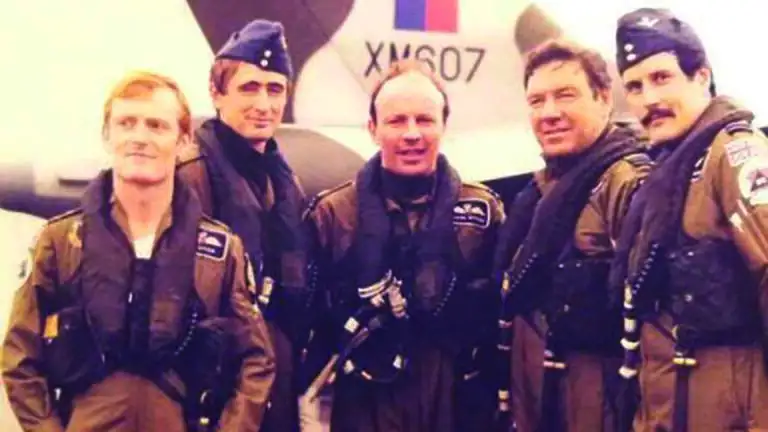
The Falklands War 1982: The Build-up to Operation Black Buck
On 2 April 1982, Argentina invaded and occupied the Falkland Islands. It was the beginning of a ten-week conflict that ended with the Argentines surrendering
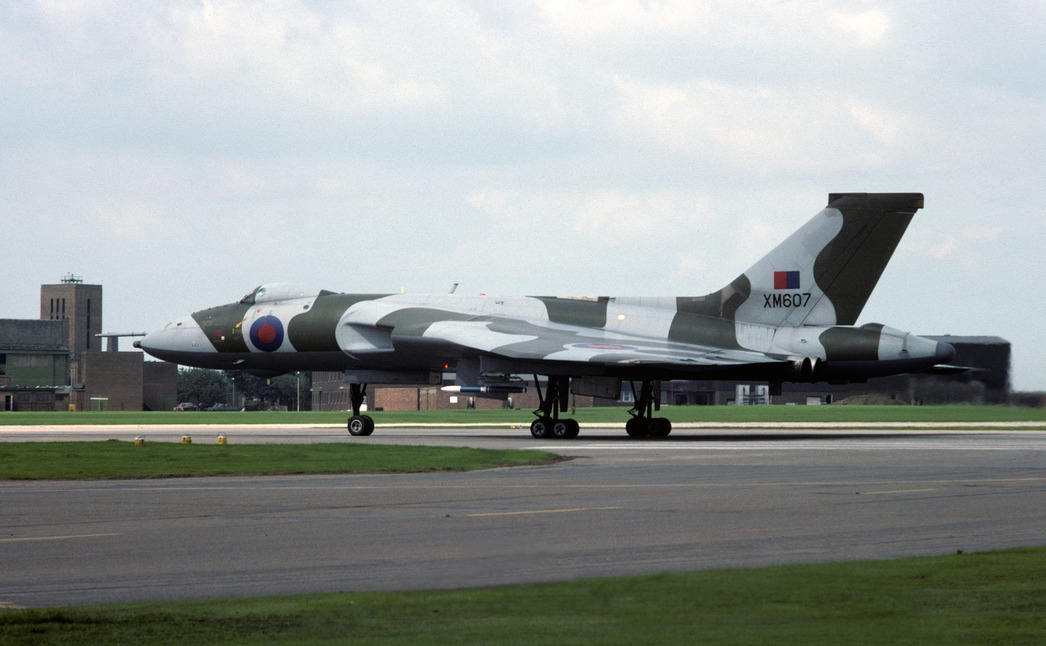
No. 27 Squadron flew the last Scampton Vulcan Sortie on the 31st March 1982, disbandment day, and handed over the maritime reconnaissance role to the Nimrod fleet. The running down process had first claimed 230 OCU in August 1981, closely followed by No. 617 Squadron in December and No. 35 in February 1982.
Waddington was expected to continue to fly Vulcans for a couple of years, until the Tornado was firmly established in service, but in November 1981 it was revealed that No. 1X would go in April 1982, followed by No. 44, 50 and 101 before the end of June. Economy was the sole reason for the decision.
Ironically, the only time the Vulcan was used in anger came just as the fleet was being disbanded, during the South Atlantic Conflict in 1982. At the time British armed forces were equipped and trained for war in Europe as part of NATO, and air-to-air refuelling capability for the RAF’s large aircraft had been deemed unnecessary. Suddenly there was a need to fly nearly 4,000 miles, mount an attack and return. Round-the-clock efforts saw three Vulcan B Mk.2s, drawn from No. 44, 50 and 101 Squadrons, overhauled, refitted with refuelling systems (with probes scrounged from airframes around the world), and equipped with electronic countermeasures borrowed from 208 Sqn Buccaneers. The Vulcans were then deployed to Wideawake airfield on Ascension Island, along with a tanker force of Handley Page Victors. From there the Vulcans flew 7 missions to the Falkland Islands, each supported by 11 Victor air- to-air tankers, refuelling the attacking Vulcan five times on the outward journey and once on the return.
It came as a total surprise that we were going to attack the Falkland Islands in a Vulcan. In the operational environment of the 1980s, the Vulcan only had one viable role, that of a low-level nuclear strike against the Soviet Union. It was considered too slow, vulnerable and inaccurate to be used as a conventional bomber; however, the RAF had nothing else capable of the 7,000 mile round trip from Ascension Island to the Falklands.
Even so, it required every available Victor tanker to get the Vulcan and its 21 x 1,000lb bombs to Port Stanley. Flying in loose formation, in total radio silence, each of the Victors gave up its fuel in turn to the Vulcan and remaining tankers before returning to Ascension. After 7 hours we found ourselves alone, with considerably less fuel than planned, and descending to low-level to keep below enemy radar cover.
The target was to be the runway at Port Stanley and the attack was to constitute the first blow in the battle to recapture the Falklands from the Argentinians.
We levelled at 300 feet over the moonlit sea and listened to the Radar Warning Receiver buzzing with threatening radar activity. Even though we had stopped all our radio and radar transmissions to limit the chance of detection, the Royal Navy battle fleet anti-aircraft systems fire control radars had found us and ‘locked-on’. We prayed that they had received the signal announcing the intention of our attack.
Forty miles from the assumed position of the target, the aircraft was pulled into a full-power climb to the bombing altitude of 10,000ft (the optimum altitude for a free-fall bomb to penetrate a runway and explode, creating a large crater). Now selected ‘on’, our radar took a while to stabilise, but soon confirmed the accuracy of our navigation and the target area was identified. Approaching the target, a lock-on from an enemy radar controlled anti- aircraft system was broken using active electronic counter measures, the bomb-doors were opened and the bombs released.
After about 11 seconds holding the aircraft steady on that final run-in and looking down on the lights of Port Stanley, all bombs had gone. Mission completed, there was insufficient fuel for us to have the luxury of descending again to low-level to sneak out below enemy radar cover. It was now full power, hard left and climb for our next rendezvous with another tanker off the coast of Brazil, which would take us on the first leg ‘home’ to Ascension Island.
One bomb had cratered the runway, making it unusable by enemy fast-jet aircraft for the remainder of the conflict. The Argentinians subsequently redeployed a number of their best fighter squadrons to the North of their country in defence of their bases and headquarters. Probably concerned about Vulcan attacks on the mainland. Who knows…?
The 1st “Black Buck” sortie took place on 30 April-1 May 1982, with the Vulcan armed with twenty-one 1,000lb (450kg) conventional bombs. Two Vulcans took off, XM598 as the lead aircraft and XM607 as the reserve, but shortly after take-off XM598 (commanded by Sqn Ldr John Reeve) had a pressurisation failure, leaving XM607 and Flt Lt Martin Withers to take charge, Withers announcing to his crew: “Looks like we’ve got a job of work”. The diagonal bombing run was made at around 4am local time, and placed one bomb in the centre of the runway at Port Stanley airfield, proving its vulnerability and causing the Argentine invaders to change their plans. These raids captured the world record at the time for the longest- ever bombing mission: a return journey of nearly 8000 miles (12,500km), taking 15 hrs 45 mins. Of the remaining raids, two were scrubbed due to bad weather and a refuelling unit failure, Black Bucks 2 and 7 (the latter also piloted by Withers) dropped conventional bombs, while Black Bucks 5 and 6 attacked radar installations with Shrike missiles.
Sqn Ldr Barry Masefield recalls: “The Vulcan was fitted with a jammer pod on the Skybolt mounting points under the starboard wing to counteract the Western technology used in the Argentinian radars. However, the simplest electronic warfare equipment fitted on the ‘Back Buck’ raids comprised a tape-recorder loaded with a pre-recorded tape in Spanish and connected to the V/UHF radio. The message, which I would only have transmitted if we were detected, stated that the Vulcan was an Argentinian supply aircraft which could only transmit and not receive radio messages and was trying to make an emergency landing at Port Stanley airfield. Unfortunately, we decided that as the grammar was so perfect, it would be recognised as a fake and was therefore never used!”
Like the Valiant and Victor before it, the Vulcan adopted the role of tanker in the last years of its career. In 1982 with the Falklands campaign in full swing and
involving a large number of the Victor tanker force, the UK based fleet was left sorely depleted. The programme for conversion of VC10s into tankers was in hand, but could not be accelerated, so as a short-term measure six Vulcans (including XH558) were hastily converted to tankers at Woodford, the type being designated the K Mk.2. By June 1982 the first (XH561) was in service, and all six were on the strength of 50 Squadron by October of that year. Each aircraft was fitted with a single HDU (Hose Drum Unit) into the ECM bay in the tail, with a wooden surround of somewhat shed- like appearance! The additional fuel load was carried in three standard Vulcan long-range tanks fitted in the bomb-bay, (each holding 1,000 gallons) giving a total fuel capacity of 100,000lbs. The type served until March 1984, when there were sufficient VC10s to take over the tanker role.
The last Vulcan squadron (No. 50) was disbanded at Waddington on March 31st 1984, but it was not quite the end for the type. The RAF retained the Vulcan for display purposes, one of which was XH558, which continued with the Vulcan Display Flight until 20th September 1992.

On 2 April 1982, Argentina invaded and occupied the Falkland Islands. It was the beginning of a ten-week conflict that ended with the Argentines surrendering
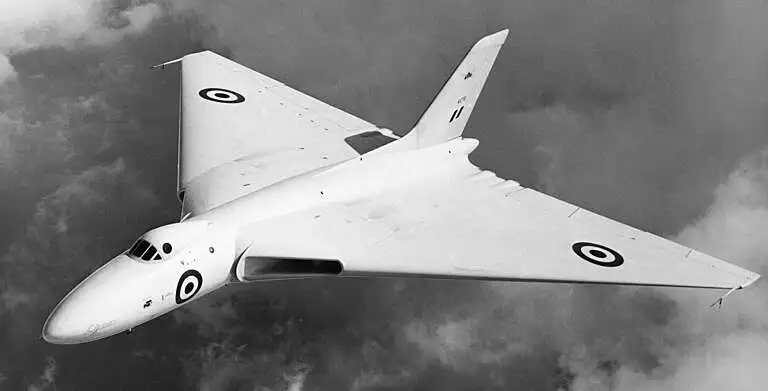
Whilst Mr Ewans was hard at work in the design office, a certain David Thirlby was equally hard at it on the factory floor! The
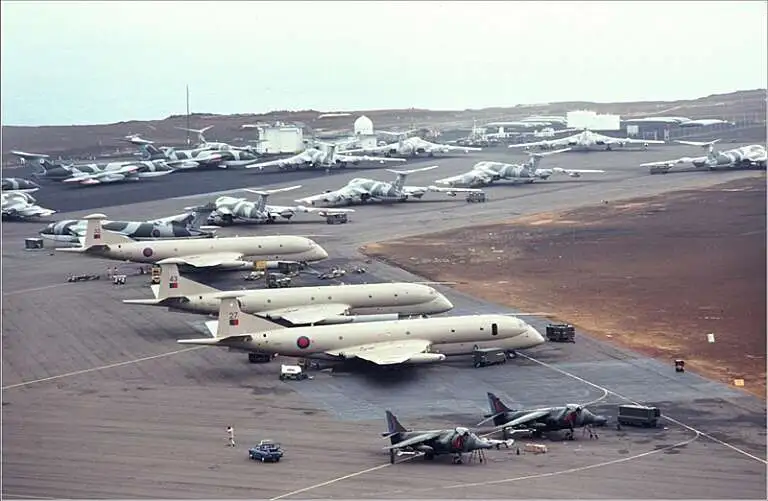
Barry Masefield, former XH558 Air Electronics Officer, relives his experiences back in 1982. This article first appeared in a special 20th Anniversary edition of ‘The Vulcan’
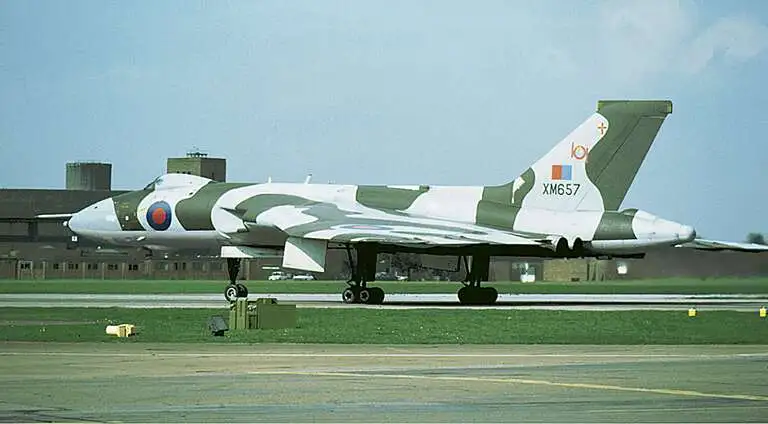
A complete change in the role of the V- Bomber came about during 1963, when it became clear that in the absence of a long-